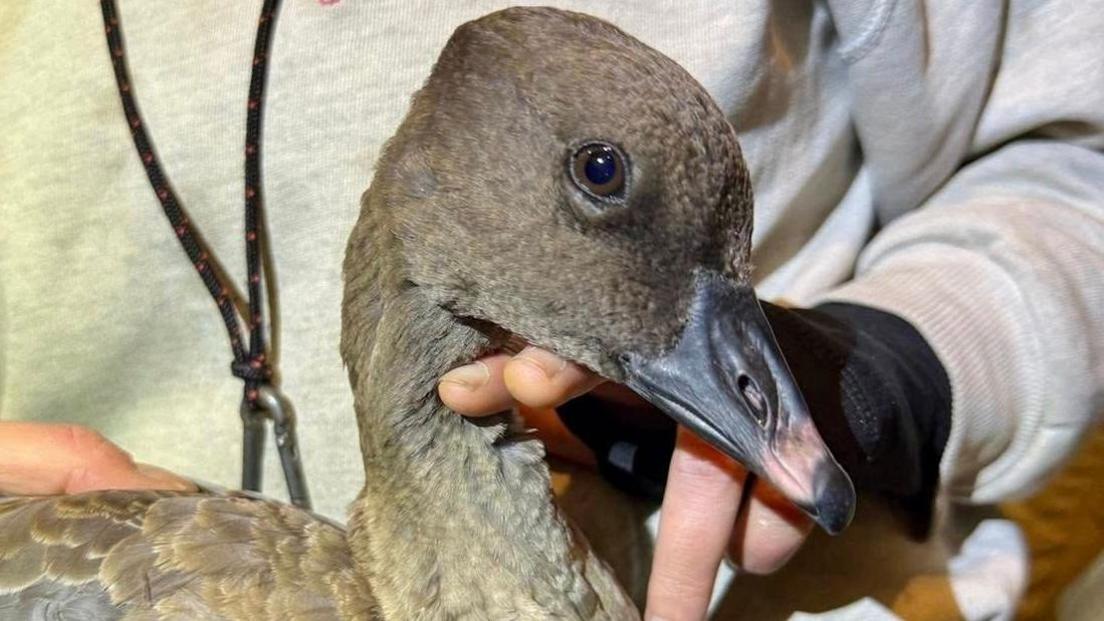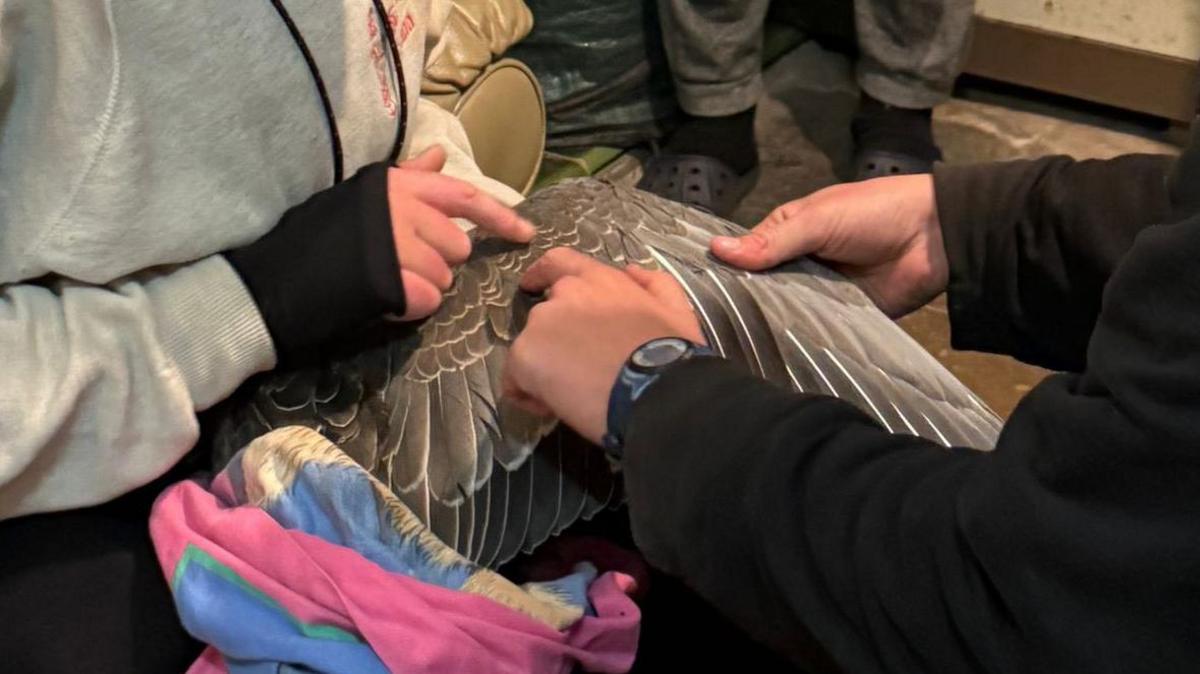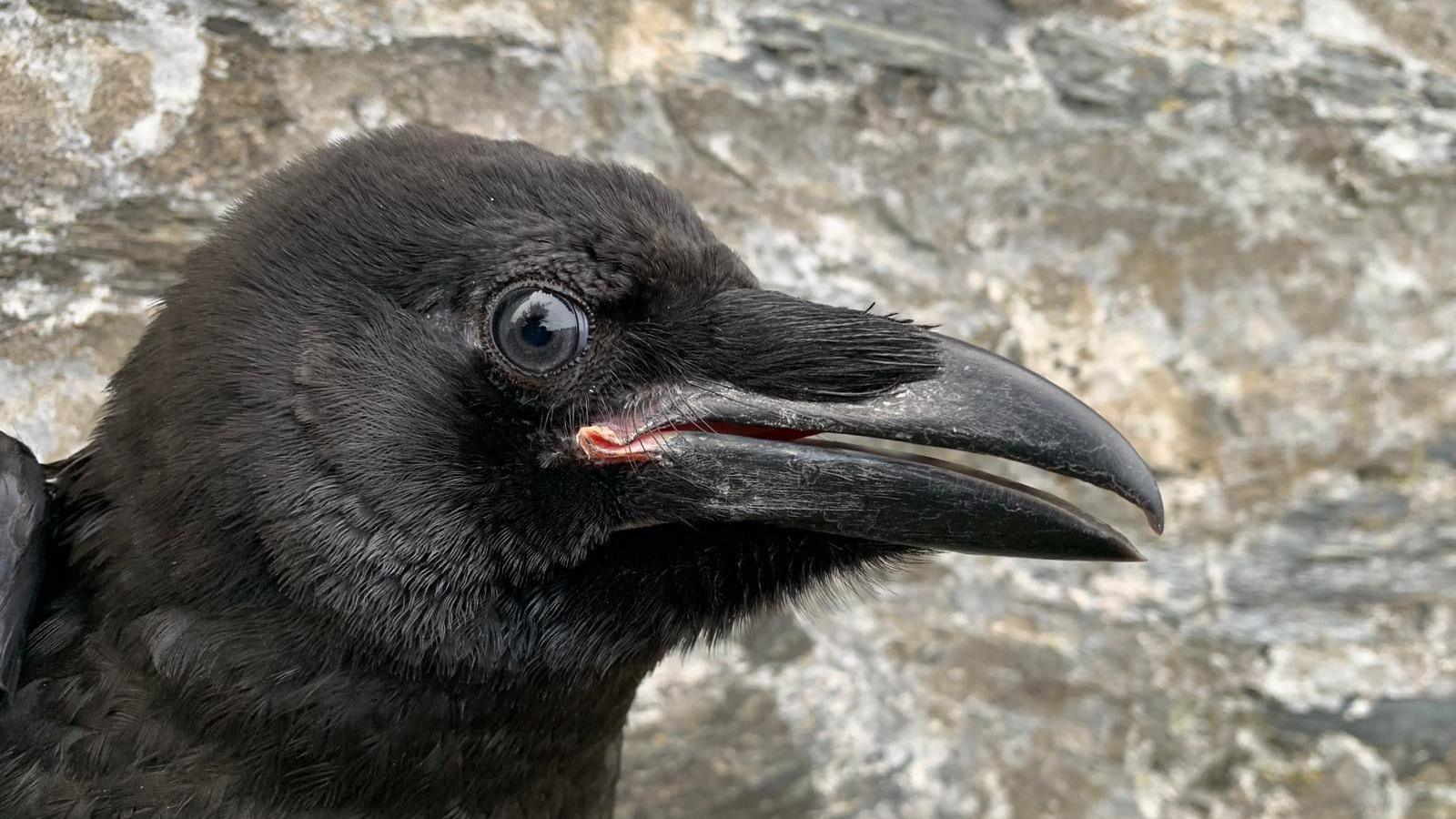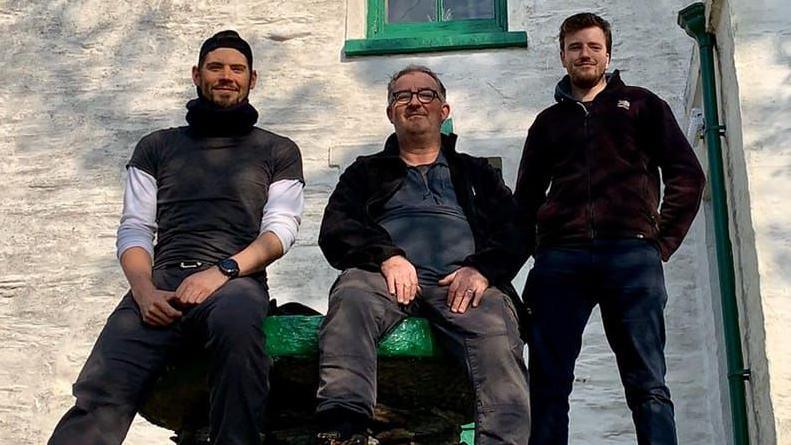Rare ringing of pink-footed goose at observatory

A young female pink-footed goose was ringed
- Published
A pink-footed goose has been ringed on the Calf of Man for only the second time since a bird observatory was established there in 1959.
The species, which originate in Iceland and Greenland, often migrates over British Isles during autumn and sometimes rests on the small island off the southern coast of the Isle of Man during the journey.
Last week saw a young female that had come to rest during the night at Cow Harbour was ringed following a dazzling session, a technique that uses a bright light to get close enough to the bird to catch it.
Ornithological volunteer Maia Jones said while the geese were frequently flying over the island, "it was very unusual to actually be able to catch one".
Ms Jones said the bird, which had hatched earlier in the year, would have been flying in a flock, most probably a family group.
The species migrate south to "slightly warmer locations", she said, which meant they "have to fly quite far over oceans, so it could have come a really long way and this might have been one of the first times it had a break".
Bird ringing is a practice carried out by trained professionals in which the animals are caught, and a lightweight uniquely numbered metal ring is placed on their foot to collect data on their survival and movements.
The last time a pink-footed goose was ringed on the Calf of Man was in 1990.

Measurements such as wing length were also taken from the goose
Ms Jones said the practice was "really important to add to the pool of knowledge on the species", with biometric details like weight, and wing length also taken.
She said that the species "generally" are not ringed a lot, as there could be "very limited windows when they were on land" and the bird observatory often prioritised very early morning ringing using nets which do not catch pink-footed geese.
The bird was ringed and measurements were taken quickly before it was placed in a dark room to help it adjust after the bright lights, and released shortly after during the night.
She said the bird "probably left in the early hours" after and the team had not seen it since.
The health and safety of the bird had been "at the forefront of the operation" while the ringing took place, she added.
Get in touch
Tell us which stories we should cover on the Isle of Man
Read more stories from the Isle of Man on the BBC, watch BBC North West Tonight on BBC iPlayer and follow BBC Isle of Man on Facebook, external and X, external.
More like this story
- Published27 June

- Published1 January
